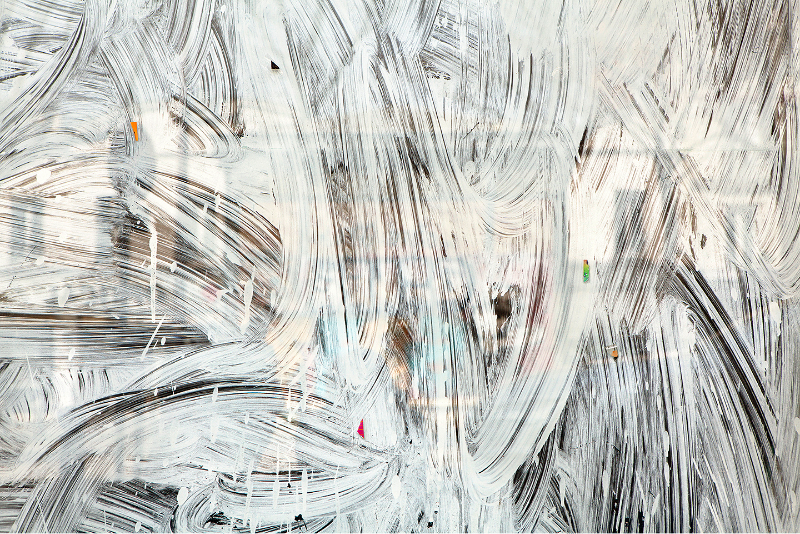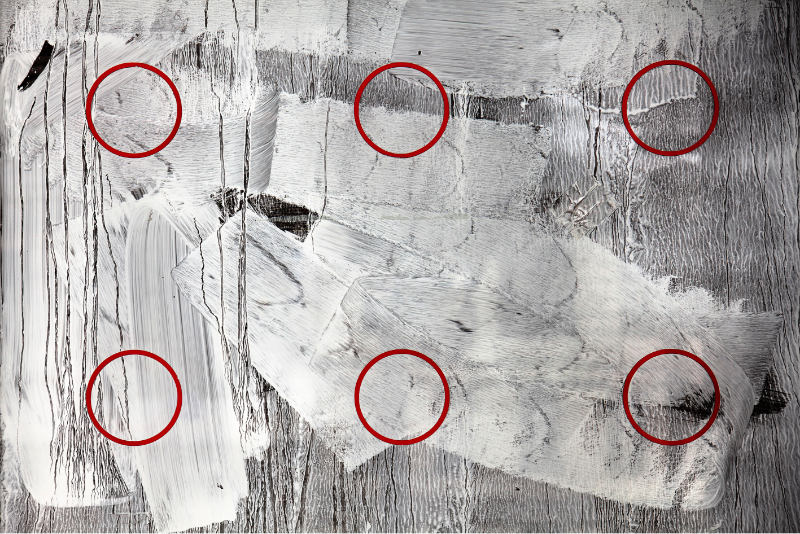Your cart is currently empty!
Alexandra Hedison

Windows often appear in art, sometimes as framing devices, sometimes as apertures to other worlds. In her new photographic series “The In Between,” Alexandra Hedison has come upon a way to do both, using ready-made vignettes. While exploring the streets of Paris, a city in which she has spent much time, she noticed how shop windows were whitewashed while interiors were being renovated—to prevent people from looking in. Different workers executed this mundane task with very different, even artistic, strokes—some used vertical strokes, some circular strokes, some diagonal slashes, and so on. Then over time, as clothing and equipment scratched and rubbed against these veils, bits of the inside were revealed.
Over a four-year period Hedison scoured the city for windows that captured her interest, windows that had enough visual intrigue, texture and depth—windows worth photographing. Framing has a lot to do with the highly arresting quality of the resulting images, and she framed these works largely in camera, after studying the windows she chose. She has called each photograph a “Found Painting,” and indeed on quick glance they look like abstract paintings, ones of remarkable variety and tantalizing mystery. And the longer we look, the more the clues and details of what’s inside and what’s outside emerge.

In some, we’re mainly looking at the paint and how it’s been applied. Found Painting #19 (all works 2017) is comprised of jagged ribbons of overlapping, vertical strokes that appear behind a zigzagging, horizontal scroll of paint running across the midsection. The rhythmic disruption of the vertical strokes creates a tension that makes the image vibrate. Found Painting #26 also shows mostly paint, although this brushwork is much more expressionistic, and covers the window with heady swirls of white. Here the paint is thin, and bits of color bleed through from inside. If you refocus your gaze, you will see a reflection of a hulking building across the street. Thus, three layers of imagery are in this one photograph, and one keeps looking from one layer to another.
In other work the interior or the exterior is much more obvious. Found Painting #27 shows two adjoining windows, and Hedison positioned herself in such a way that the right frame shows a haphazardly whitewashed window, while the left frame shows the slightly smudged reflection of what must be at a 90-degree angle to the window—a row of classic Parisian apartment buildings.
Historically, a number of photographers have been fascinated by and made photographs of shop windows, their content and their reflections—large shop windows were an innovation that defined affluent urban life of the early 1900s. Walker Evans made such a series, and there are well known examples by Berenice Abbott and Lyonel Feininger. Hedison shows us that the subject can be approached anew—instead of looking through a transparent pane, we see through a glass obscurely. And by using numbered variations of the same title, she has wisely withheld from us what kind of store we may be looking at or where we might be—allowing us to savor a precious moment of mystery.